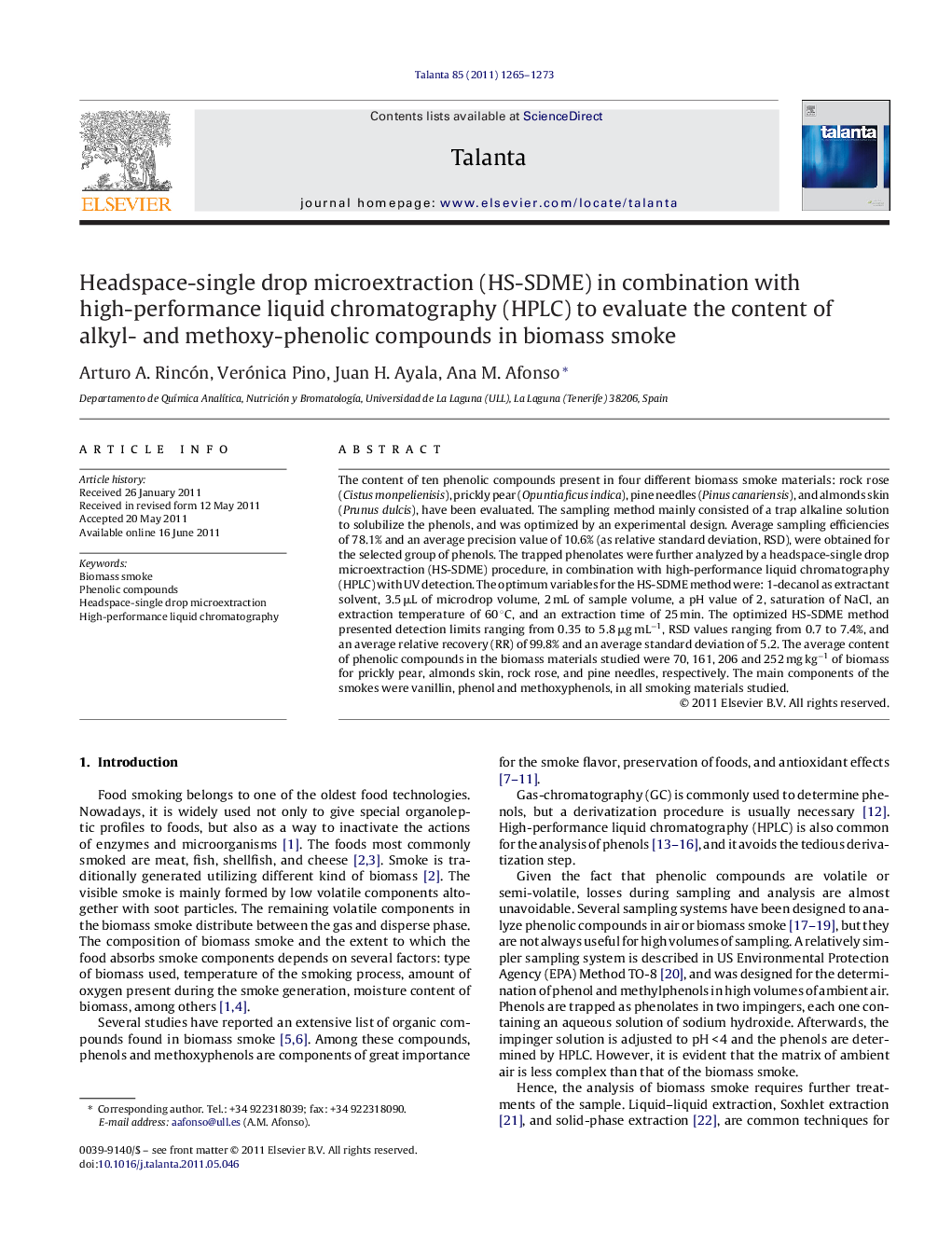| Article ID | Journal | Published Year | Pages | File Type |
|---|---|---|---|---|
| 10560470 | Talanta | 2011 | 9 Pages |
Abstract
The content of ten phenolic compounds present in four different biomass smoke materials: rock rose (Cistus monpelienisis), prickly pear (Opuntia ficus indica), pine needles (Pinus canariensis), and almonds skin (Prunus dulcis), have been evaluated. The sampling method mainly consisted of a trap alkaline solution to solubilize the phenols, and was optimized by an experimental design. Average sampling efficiencies of 78.1% and an average precision value of 10.6% (as relative standard deviation, RSD), were obtained for the selected group of phenols. The trapped phenolates were further analyzed by a headspace-single drop microextraction (HS-SDME) procedure, in combination with high-performance liquid chromatography (HPLC) with UV detection. The optimum variables for the HS-SDME method were: 1-decanol as extractant solvent, 3.5 μL of microdrop volume, 2 mL of sample volume, a pH value of 2, saturation of NaCl, an extraction temperature of 60 °C, and an extraction time of 25 min. The optimized HS-SDME method presented detection limits ranging from 0.35 to 5.8 μg mLâ1, RSD values ranging from 0.7 to 7.4%, and an average relative recovery (RR) of 99.8% and an average standard deviation of 5.2. The average content of phenolic compounds in the biomass materials studied were 70, 161, 206 and 252 mg kgâ1 of biomass for prickly pear, almonds skin, rock rose, and pine needles, respectively. The main components of the smokes were vanillin, phenol and methoxyphenols, in all smoking materials studied.
Related Topics
Physical Sciences and Engineering
Chemistry
Analytical Chemistry
Authors
Arturo A. Rincón, Verónica Pino, Juan H. Ayala, Ana M. Afonso,
